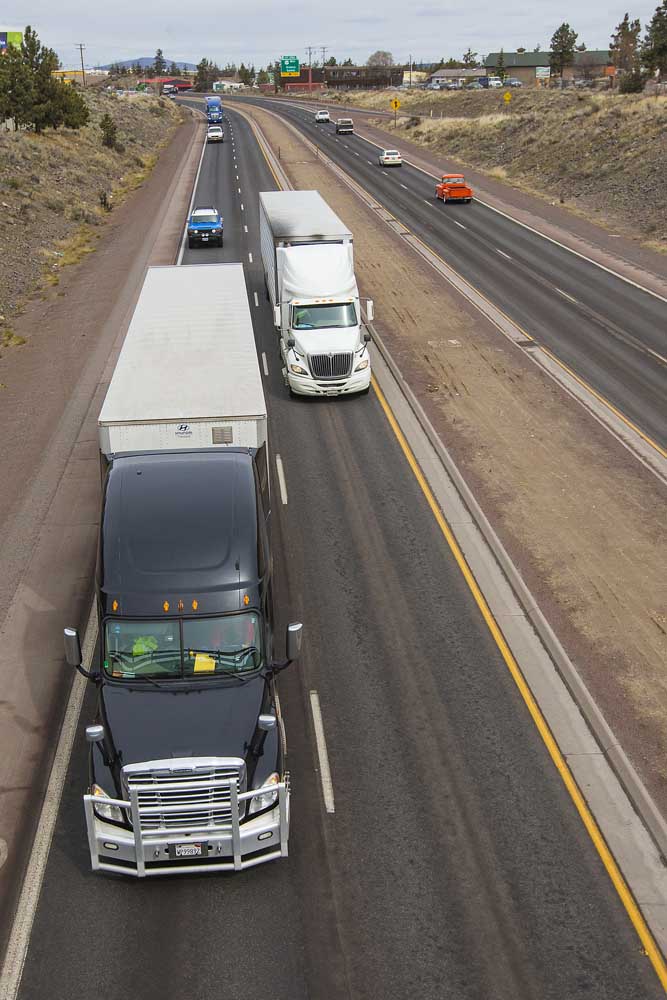Truckers are keeping goods moving in Central Oregon Oregon and beyond
Published 5:00 am Thursday, April 2, 2020

- A pair of semi trucks travel south along U.S. Highway 97 through Bend on Saturday, March 28, 2020.
While many Oregonians stay home as a way to slow the spread of the coronavirus pandemic, truckers across the state are still climbing into their semis and delivering food and other goods to keep store shelves stocked.
Gov. Kate Brown’s order to stay at home does not apply to truck drivers, who perform a job considered necessary for the public good. Trucking companies can continue to operate as long as they can establish and enforce social distancing practices.
At times it can seem like products are not being delivered. There are empty shelves in the grocery store where the toilet paper, beans, pasta, flour and rice are usually located. The delivery companies aren’t always to blame. Much of the backlog comes from supply chain issues, said Joe Anzaldo, chief operating officer for Newport Avenue Market in Bend.
“Manufacturers can’t keep up with the demand,” said Anzaldo. “Also warehouses also can’t keep up. They don’t have enough staff; they don’t have enough trucks; they are not built to handle the demand.”
Overbuying is another problem, said Anzaldo, as Oregonians stock up on shelf-stable products for fear of grocery stores closing down. Nonperishable food items fly off the shelves once they are available.
But truck drivers still face other challenges in getting their goods to markets across the state. Since restaurants are closed except for takeout, drivers are deprived of one place they could count on for a little rest and relaxation from the road. Roadside rest areas are still open in Oregon but have closed in some other states.
“They are more confined than they used to be,” said Luke Williams, president of Central Oregon Truck Co., which mainly delivers material to construction companies and industrial sites. “Our drivers are in the cab of their truck all day long and when they finish driving for the day they are still stuck in the sleeper of the truck to eat their meals and relax.”
Williams added that there’s been a change in the way drivers interact with shippers and receivers. Drivers now tend to stay in their trucks while goods are being loaded or unloaded, in order to limit interaction with office and yard staff. Paperwork is put in a box and not touched for two or three days, he said.
Another challenge is that many shippers and receivers have stopped allowing drivers to use their restrooms, and repair shops have blocked off their lounges.
“We are continually trying to work with our customers and repair facilities to allow our driving team basic necessities like a restroom,” said Williams.
The Oregon Trucking Associations Inc., an advocacy group for truck drivers, said many Oregon hotels and restaurants have stepped in to fill the gaps. Some hotels are offering drivers discounts. “Trucker-friendly meals” that are easily picked up curbside are available at McDonald’s. Newport Avenue Market in Bend is giving away sack lunches to long-haul truck drivers to keep them fueled up for their drive.
“We keep hearing that we’re all in this together,” said Jana Jarvis, OTA president and CEO. “It’s inspiring to see communities, businesses and individuals making the effort to care for our drivers and keep trucks and goods moving.”






